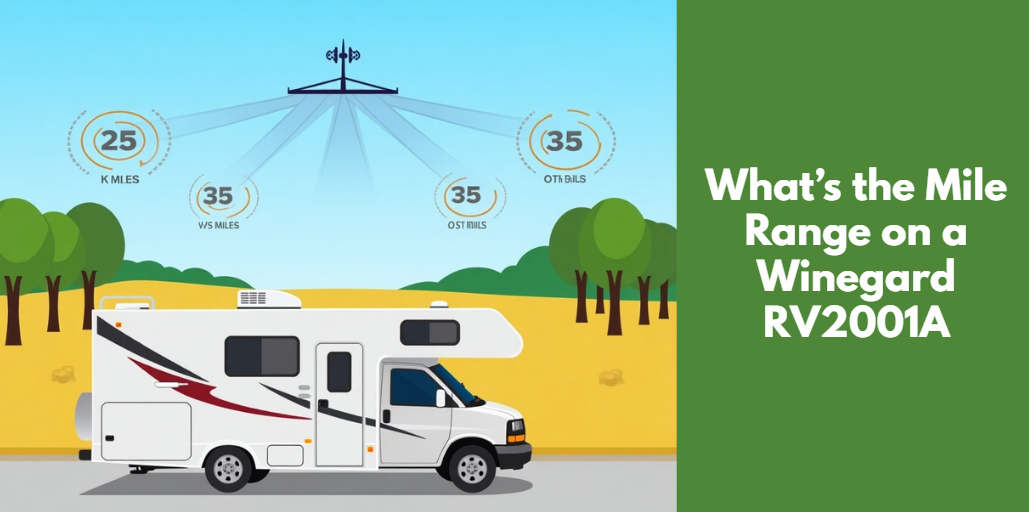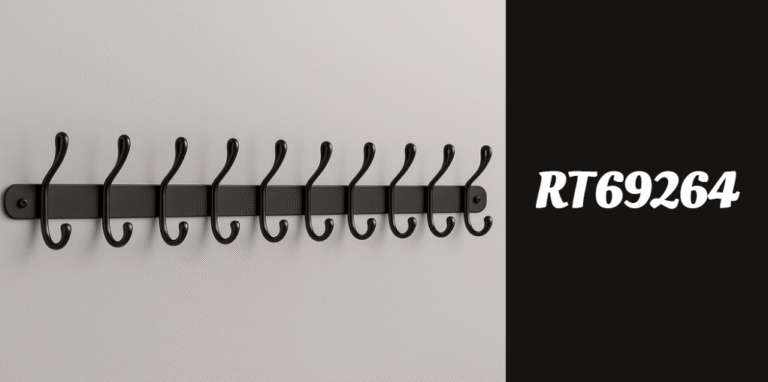What’s the Mile Range on a Winegard RV2001A? Full Guide for RV Owners
For travelers who live life on the road, staying connected to news, entertainment, and weather updates is essential. Whether you’re parked in a national park or camping near the coast, having a reliable TV signal can enhance your RV experience.
One popular solution for over-the-air television access is the Winegard RV2001A antenna. But a common question many RV owners ask is: what’s the mile range on a Winegard RV2001A?
In this comprehensive article, we’ll explore everything about the RV2001A’s range, performance in real-world situations, factors affecting its reception, and installation best practices. If you’re looking for an easy-to-understand, in-depth resource, you’re in the right place.
Understanding Antenna Range
Before diving into the Winegard RV2001A specifically, it’s helpful to understand what “mile range” means when it comes to antennas. The mile range of an antenna refers to the maximum distance from a broadcast tower at which the antenna can reliably pick up signals. This is usually given under ideal conditions, which may not always reflect real-world usage.
Several factors can affect antenna range:
- Line-of-sight distance to the broadcasting tower.
- Obstructions like hills, buildings, and forests.
- Weather including rain, wind, and humidity.
- Frequency type – UHF signals travel differently than VHF.
This means that while a manufacturer may advertise a 55-mile range, actual performance may vary depending on your environment and setup.
Winegard RV2001A: Technical Specifications
The Winegard RV2001A is a well-regarded TV antenna designed specifically for recreational vehicles. It’s known for being compact, easy to install, and relatively affordable. The following table breaks down its key specifications:
| Feature | Details |
|---|---|
| Model Number | RV2001A |
| Frequency Support | VHF / UHF |
| Amplified | Yes (includes power booster) |
| Antenna Type | Omnidirectional |
| Mounting Style | Roof-mount for RVs |
| Max Reception Range | Up to 55 miles (manufacturer claim) |
| Dimensions | 12.4” Diameter, 2.4” Height |
| Weight | Around 1.5 lbs |
From the specs, it’s clear that the RV2001A is built for portability and efficiency, with a focus on maximizing signal reach while remaining lightweight and durable.
What’s the Mile Range on a Winegard RV2001A?
Winegard claims that the mile range on a Winegard RV2001A is up to 55 miles. This means that, under perfect conditions, the antenna can detect broadcast signals from towers as far as 55 miles away.
However, keep in mind that this number is typically calculated in an open environment with no signal interference. In the real world, especially in mountainous areas or dense forests, you might see a decrease in performance.
Here’s a breakdown of expected performance based on user feedback:
| Environment | Expected Mile Range |
|---|---|
| Open Flat Terrain | 45–55 miles |
| Light Tree Coverage | 35–45 miles |
| Urban Area (buildings) | 25–35 miles |
| Mountainous Region | 15–25 miles |
In short, if you’re traveling in areas with minimal obstructions and have properly set up the antenna, you can expect performance close to the advertised 55 miles.
Real-World Performance Insights
To understand the real-world capability of the Winegard RV2001A, we collected testimonials and reviews from RV owners who’ve used the product across different U.S. regions. Here’s what we learned:
- Midwestern users reported excellent reception in rural areas with flat land and few obstacles.
- Southern and coastal regions showed mixed results, especially in swampy or tree-heavy locations.
- Western users, particularly in mountainous areas like Colorado or northern California, saw the lowest reception, often maxing out at 20-25 miles.
What stands out in these reviews is the role of placement, elevation, and proper orientation of the antenna. Those who elevated their antenna or used signal amplifiers generally enjoyed better results.
Factors That Affect Signal Reception
There are several key factors that determine how well the Winegard RV2001A performs in any given situation. These include:
Geographical Location
Hilly or mountainous terrain can block or reflect signals. Flat and open areas provide the best range.
Obstructions
Buildings, thick forests, and even other RVs nearby can reduce signal strength. Parking in an open area increases the chance of better reception.
Weather Conditions
Heavy rain, snow, or even fog can interfere with signal clarity. Though this usually causes a temporary drop in quality, it can reduce the antenna’s range by several miles.
Installation Quality
Improper mounting can seriously affect performance. Using the included amplifier correctly and mounting at the highest point on your RV is crucial.
Installation and Setup
Installing the Winegard RV2001A is relatively simple, even for beginners. Here’s a brief overview:
- Mount the antenna on the highest point of your RV using the included hardware.
- Connect the coaxial cable to your TV or digital converter box.
- Install the amplifier, if available, to boost weak signals.
- Scan for channels using your TV’s menu settings.
For better performance:
- Park in an open area when possible.
- Avoid areas surrounded by tall trees or buildings.
- Re-scan for channels each time you move to a new location.
Winegard RV2001A vs Other Antennas
If you’re curious how the RV2001A stacks up against other Winegard models, here’s a quick comparison:
| Feature | RV2001A | Sensar IV | AIR 360+ |
|---|---|---|---|
| Max Range | 55 miles | 65 miles | 55+ miles |
| Antenna Type | Omnidirectional | Directional | Omnidirectional |
| Amplified | Yes | Yes | Yes |
| Price Range | Budget | Mid-range | Premium |
| Ease of Installation | Easy | Moderate | Easy |
The RV2001A is best suited for casual travelers and RV owners who want an affordable and easy solution. For users who frequently travel to remote areas, a directional antenna like the Sensar IV may offer better results.
Upgrades and Accessories
If you want to push your RV2001A’s performance closer to its 55-mile limit, consider the following accessories:
- Signal booster: Improves weak signals, especially in wooded or remote areas.
- Pole mount extension: Elevates the antenna for a better line of sight.
- HD converter box: Essential if your TV isn’t digital-ready.
Many users find that combining the RV2001A with a Winegard amplifier greatly enhances reception across all environments.
Conclusion
So, what’s the mile range on a Winegard RV2001A? Officially, it’s up to 55 miles—but realistically, you should expect somewhere between 25 to 50 miles depending on your environment, setup, and weather conditions. While it may not match high-end directional antennas in rugged locations, the RV2001A delivers reliable and consistent performance for most RV users on the road.
For RV owners seeking an easy-to-use, compact, and budget-friendly antenna that works in a wide variety of locations, the RV2001A remains a smart choice. With proper installation and the right conditions, you can maximize its range and enjoy a wide array of over-the-air content wherever your journey takes you.
Recommended Articles
Pomezenski: Exploring the Unique Meanings Behind a Versatile Term
NetworkFinds: How HHC Vaping Affects Creativity and Focus
Tyvoria Drystok: A Complete Guide to Her Work in Parenting, Organization & Health
NoteEffective4761: The Ultimate Guide to Smarter Digital Note-Taking






